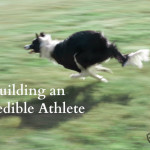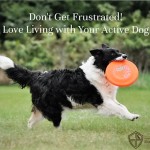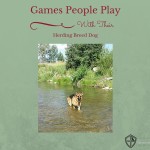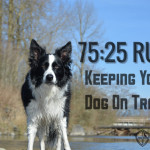How to Gain Your Distracted Dog’s Attention
Gaining Your Dog’s Attention: Working with the Distracted Dog
Distractions are all over the world; everywhere you go, there is something awesome for your dog to see, smell and interact with. So how do you gain your dog's attention?
There are numerous techniques on how to get attention from your dog and how to retain the attention for long periods of time, but I feel most of the techniques that are widely available to owners, misses key points for long term success. Attention isn’t only for when you want your dog’s eyes on you, but teaching them this behaviour can really take all other parts of your training further and easier.
In this article, I’m not going to give you a quick fix to stop your dog from ignoring you. Gaining your dog’s attention will take practice, patience and overall hard work on your part, but it is so incredibly worth it in the long run. To get started, there are three rules that are on-going when teaching your dog to give attention:
- The owner must be consistent on the release every time
- When distractions are present you mustn’t allow the dog to engage with the stimuli until you have given the okay (if you choose to)
- Proactive training – spending one on one time training the cue you want
PRO-ACTIVE APPROACH
By taking the extra time to teach your dog the cue in a low distraction environment and by spending quality time with your dog, you will highly increase your success for a cooperative dog when the distractions come around.
What you will need:
- A clicker
- Treats/food
First off, take your dog out for a quick jaunt to expel any excess physical energy that your herder might have (which is probably a lot), this will really help them focus more during training.
Second, sit down in a quiet room where it’s just the two of you.
- Bring some HIGH value food, such as real chicken, beef or other wholesome treats or if you opt to use a commercial treat, I use True Dog ‘treat me’ Freeze Dried Salmon & Bison and 1 Dog 2 Dog Freeze Dried Turkey Hearts, it is super smelly, less messy and good for your high energy dog.
- Sit down in front of your dog and have your clicker ready. If you don’t know about Clicker Training, please look at my video on “What Is Clicker Training”.
- Don’t say anything just yet, wait for your dog to look at your face (or general area), CLICK as soon as he does this. Then reward with a treat and praise “good dog!” – get happy!
Repeat this over and over until your dog constantly stares at you. Now you can move on to putting a cue into place.
PICKING A CUE: Honestly, it doesn’t matter which cue you choose, except keep it short and a specific tone to be consistent with. I use “look at me”, because it’s what I constantly kept saying in the beginning, even though I was trying to use another’s cue “focus”, which I felt it was too “strict” for my personality. Find a word(s) that can roll off your tongue the easiest.
- Now that we have a cue, give your dog a treat on the floor. Once he eats the treat, but before he looks at you again, give your cue. The second the dog looks at you, CLICK & reward with treat. – highly praise!
Practice this another 20 times, then move out into a busier area in the house and repeat the last step, asking the cue, clicking for success and rewarding.
GENERALIZING THE CUE IN OTHER EASY AREAS
Now that the dog knows the cue, we will start teaching the dog that it applies in other areas of their life where it isn’t a sit down training time. During these times, we are also going to introduce the RELEASE CUE, which means, “okay you don’t have to look at me anymore”.
Your release cue can be anything: “okay”, “release”, “loose”, “free”, etc.
DINNER TIME – one of the best times to practice newly taught cues or freshen up on older cues. Before you feed them, give them the cue, when they comply, give the release cue and give them their dinner.
GOING FOR WALKS – Before putting on the leash, ask the dog for the cue. Once the dog complies, put the leash on give the release cue. Ask the attention cue again before opening the door, then give the release cue.
Other areas for practice:
- GETTING OUT OF THE CAR
- GETTING IN THE CAR
- CROSSING THE ROAD
- UNCLIPPING THE LEASH TO GO PLAY
- JUMPING UP ON THE BED
- PLAYING TUG GAMES
Please note: you do not need the clicker in these environments if you don’t wish to use it. Replace the time when you would CLICK, with a verbal “YES”.
BIG WORLD WITH BIG DISTRACTIONS
So your dog is getting the cue and starting to understand that it’s beneficial to offer this behaviour in many aspects of his life, but every now and then, your dog decides, “Nah, I wanna do what I wanna do” and ignores you. This is the time where we bring in what is called “negative punishment”.
Negative punishment is when you take away something the dog wants for showing an undesirable behaviour.
Example: There’s a person in the distance that your dog has locked focus on, the cue isn’t working, and your dog has no interest in you.
- Step in front of the dog so you are blocking the line of vision. The dog will dodge its head left and right to look around you.
- Repeat the cue for attention.
- If the dog looks up at you (even for a split second), step out of the way and walk closer to the stimuli (person).
- After 20 seconds if the dog still is not looking up to you, walk backwards with the dog (going further away from what he wants). Try for the attention cue after 20 feet. If success, follow above. If the dog still cannot comply then repeat this step.
This is being consistent with what we want. We’re creating a rule for the dog that will be consistent throughout the training years. It’s important for you to show the dog that just because he wants something, doesn’t mean he’ll get it every time; there are manners where he must ask you (eye contact) first before you choose either “Sorry, we can’t do that right now” or “Yes, you’ve been very good, go ahead!”
If you listen to me, you get what you want.
If you don’t listen, then we go further away from what you want.
You cannot successfully follow this rule if you are not fully satisfying your dog’s needs in all other areas: Social Interaction, Physical Exercise, Mental Stimulation, and Exposure & Socialization. A dog that is not having their needs met appropriately will be harder to train.
Article By Kris Crestejo, CDBC, Exclusively for Guild of Shepherds and Collies
Meet Our Evangelist, Kris Crestejo, CDBC








